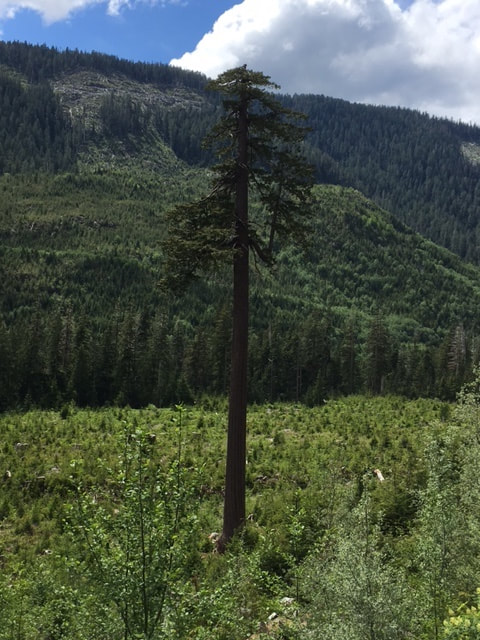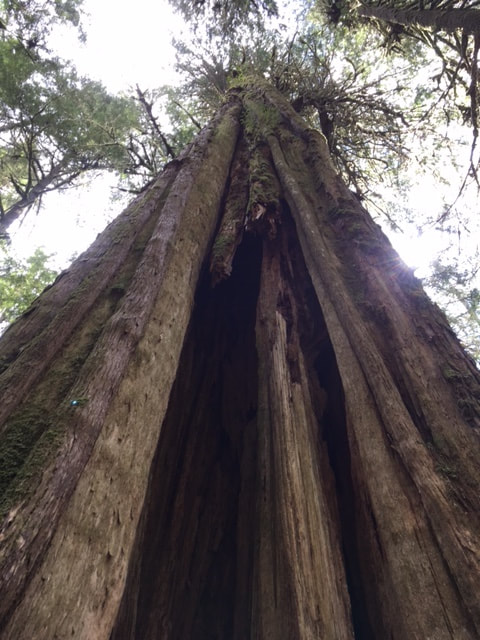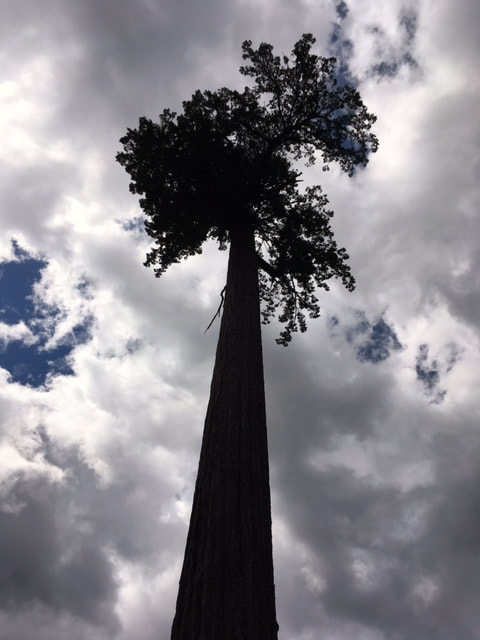|
http://www.jonimacfarlane.com/blog
It’s been a heavy week. The discovery of what appears to be a burial site at a residential school in Kamloops is an outrage that has shaken Canadians to the core. It seems the only thing that matters right now, as it should. Perhaps it's cowardly, but I can’t address it just yet.
Among other news stories, is the growing protest at Vancouver Island’s Fairy Creek. It’s shaping up to be B.C.’s largest act of civil disobedience against logging in decades. Many say it’s long overdue. The battle is putting a spotlight on the management of a shrinking base of ancient forests. Two years ago, my husband and I took a trip to the area, northeast of Port Renfrew, to see some of these remaining giants. This coastal rainforest is home to many of Canada’s largest and oldest trees: a western red cedar named Cheewat Giant is believed to be 2,000 years old and stands more than 55 metres tall. It’s impossible to contemplate a world without them, to stand among these magnificent trees and not be moved. Here are a few of my favourite books that look at our relationship with, and fascination of trees. The Magic of Trees: A Guide to Their Sacred Wisdom & Metaphysical Properties by Tess Whitehurst This comprehensive guide to over 100 species, features detailed descriptions of their magical and energetic properties and how to work with them, physically and spiritually. The author believes trees are symbols of the interconnectedness of life and that we can tap into that web to enrich our lives. Each tree has an encyclopaedic entry that features its history, and its magical and medicinal uses. The Golden Spruce: A True Story of Myth, Madness & Greed by John Vaillant Reading Vaillant is always a journey as you learn so much more than you ever imagined. The book chronicles the destruction of a sacred 300-year-old Sitka spruce tree in an act of environmental violence by a deeply conflicted man. In this fascinating story, I learned so much - about logging, its history and its future, about the Haida First Nations people, their history and culture, about Haida Gwaii and the northern B.C. coast, about the botany of trees, and about the geography, climate and growing conditions of old-growth forests. An engrossing tale of a man so obsessed, he kills the thing he loves the most. Big Lonely Doug by Harley Rustad This book propelled us to the Port Renfrew area to walk among Vancouver Island’s last remaining old-growth trees. Logger Dennis Cronin was surveying a stand of old-growth when he saw a massive Douglas fir that stood at least twenty storeys high. If cut, it could easily fetch $50K. Instead, Cronin wrapped a rarely used flagging around it that read “Leave Tree”. When the fallers arrived, every last tree around it was cut down, leaving this solitary fir. When environmentalists came across it, it became a symbol for the controversy around protecting old-growth forests. The books weaves the story of Big Lonely Doug around the history and culture of the logging industry, the environmental tourism industry, and the communities caught in the middle. The Overstory by Richard Powers Almost overwhelming in its scope, this novel turns trees into vivid and engaging characters that changes the way we think about and understand the natural world. The interlocking stories range from antebellum New York, to the late 20th century timber wars of the Pacific Northwest, and beyond. Wise, sprawling, and emotional. Limber by Angela Pelster Seventeen meditations that change and shift, not only in form and structure, but in theme and scope. Pelster, an Alberta writer, proceeds through association of thought rather than through a linear narrative, crafting beautiful poetic language to mediate on the nature of trees. A slim volume that provides glimpses into the author’s life but returns always with great compassion to her focus: trees. The Hidden Life of Trees by Peter Wohlleben A German forester, the author shares his deep love of trees and forests, and believes they act as communities in much the same way as humans. They communicate with each other, share nutrients, and create ecosystems to nurture and protect against the impacts of extreme weather and temperatures. He presents the science behind it and describes how his discoveries of trees as social being has informed his work. As I write this, the drone of heavy equipment ripping up our backyard careens through the open windows. We are changing the contour of the land to make way for a wholly renovated outdoor space. Trees, of course, are part of the plan to create an inviting, interesting space. We hope to have many years to enjoy our relationship with the trees we plant. We are lesser without them. Here’s hoping you’re getting your shots, including the second one, and that you continue to stay safe. Be well and take care as we take the first tentative steps toward regaining our former lives. In the meantime, happy reading! Joni
0 Comments
Leave a Reply. |
Archives
July 2024
Categories |



 RSS Feed
RSS Feed
